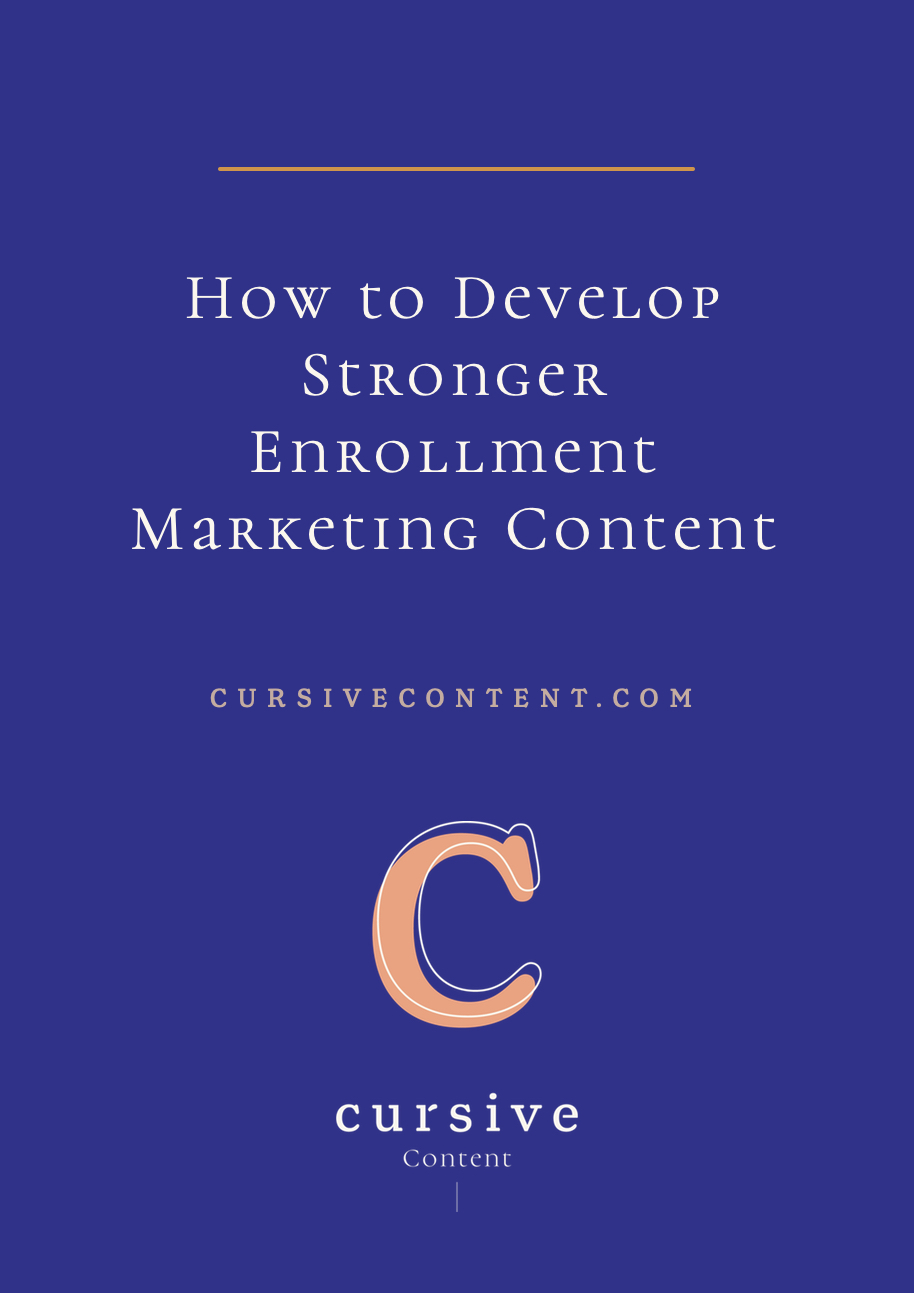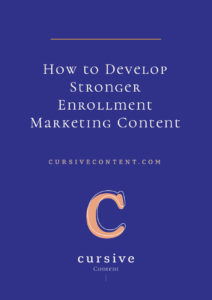How to Develop Stronger Enrollment Marketing Content

What drives your enrollment marketing content?
The best answer is the potential students. It might not always seem that easy to focus on the student, though, with other campaigns, internal priorities and the needs of multiple stakeholders getting thrown into the mix.
What really matters, though? Same answer: the potential student. Their cares and concerns should be the driving force behind your enrollment marketing initiatives. When you understand what matters to them, you can develop content that cuts through the end-of-high-school content clutter.
According to a 2014 study by Eduventures, there are four big factors that influence a student’s decision to enroll at a college or university.
Perceived Value
At first glance, the notion of “perceived value” represents the educational benefit and the cost. It is much more than that, though. Today’s college-bound student cares deeply about the companies and organizations they associate themselves with—and that same concern extends to the higher education institution they choose. So if your value is all about dollars, well, you might not be getting through to your audience.
Strengthen your story: Speak to both the immediate and long-term benefits that extend beyond the traditional (like a high post-graduation employment rate) and into the unique (such as an impressive philanthropic culture). Strive to show your authentic value and connect with the ideal student in a way no other school can.
Conversations with Key Influencers
Key influencers include parents, school counselors, peers, alumni and professors. These five groups are varied and in most cases, these conversations take place organically. In other words, they are a bit out of your control. A bit, but not entirely.
Strengthen your story: These are the people your potential student is talking to—and basing their decision on— therefore these people are as important to your marketing efforts as the potential student herself.
Develop content that speaks to each audience. True, you can’t control the dinner-table conversations parents have with their children, but you can develop content that educates (and impresses) parents and better prepares them to guide their daughters and sons. You can give school counselors greater insight into what your institution is all about by developing a video series just for them, or inviting them to special events. You can enable and encourage discussions between your strongest alumni and faculty and prospective students through Twitter chats and in-person events. You can help develop a sense of familiarity between your school and the student by allowing them to get to know the people who make up your network.
Personal Research & Information Gathering
Research and information gathering includes every little bit of information the potential student receives, seeks out or stumbles across, from your brochure and website to your social networks and that little comment someone made about you on a blog. If it’s out there, potential students will find it.
Strengthen your story: First, make sure you are telling a cohesive story across all content channels. Regardless of where or how a potential student does research about your school, you want them to have a consistent picture of who you are.
Freshen up your website content. Step up your social media game. Explore a new presence or new ways to communicate on channels that your potential students are using.
Do a little Google searching and find out what others are saying about you. While you can’t control or step into every outside conversation (nor should you), you might be able to set straight any major misperceptions. At the very least, you will know what is being said about you and can monitor and avoid any significant issues.
Communication During the Application Process
This comes down to when you communicate with students. In the Eduventures survey, most students had made a decision by September—a full year ahead of when they would first set foot on campus as a student (or not).
Strengthen your story: Knowing when your students make the decision to enroll is key. Focus key communications around those times. Keep your school at the top of their minds. Use well-timed content to remind students of that perceived value and to provide them with access to influencer groups at your school. At the same time, give outside influencers the content they need to support the potential student through their decision-making process.
Allow your prospective students to tell you what is important to them, and then show that you can deliver.
For more insight into education content marketing, sign up to get access to our FREE library of school storytelling ebooks, worksheets and on-demand tutorials — created specifically for school marketers.
MORE ARTICLES
-
 Clarity in 50 Words or Less: How to Write Your School’s One-Sentence Story
Clarity in 50 Words or Less: How to Write Your School’s One-Sentence Story -
 The 4 Building Blocks of a Strong School Story (and Why AI Needs Them)
The 4 Building Blocks of a Strong School Story (and Why AI Needs Them) -
 How to Stop ChatGPT from Making Your School Sound Generic
How to Stop ChatGPT from Making Your School Sound Generic -
 What Should Your School Do with Its Blog Now That AI Is Changing Search?
What Should Your School Do with Its Blog Now That AI Is Changing Search? -
 What Is Your Private School’s Bold & Unifying Big Promise?
What Is Your Private School’s Bold & Unifying Big Promise? -
 Viewbook Best Practices for Private Schools
Viewbook Best Practices for Private Schools -
 AI Writing Prompts to Power Private School Storytelling
AI Writing Prompts to Power Private School Storytelling -
 When to Outsource Your Private School Content Marketing to an Expert
When to Outsource Your Private School Content Marketing to an Expert

